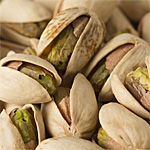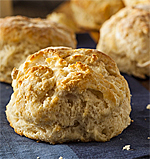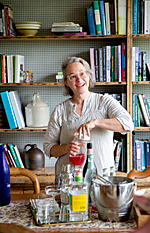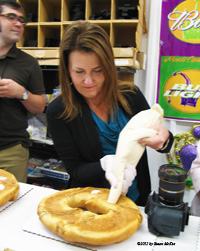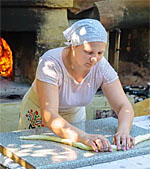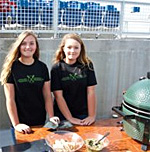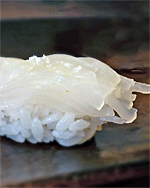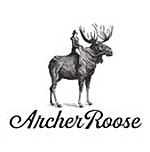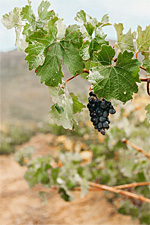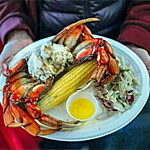British Afternoon Tea
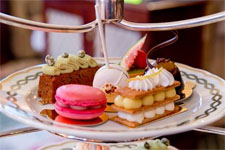 Special to Road Trips for Foodies
Special to Road Trips for Foodies
From Visit Britain
Coming to Britain and not sampling afternoon tea is like eating a scone without jam and clotted cream. Afternoon teas come in all shapes and sizes, from classic to quirky. Here’s a brief history of afternoon tea and tips for traditional teas to book.
Tea has been a staple part of the British diet for a long time, but it may come as a surprise to hear that it was thanks to a Portuguese princess that it first became popular in Britain. When Charles II married Catherine of Braganza in 1662, the newly crowned tea-loving Queen Consort soon spread her fondness for the drink around the royal court. The trend took off among the wealthy classes, eventually spreading to the whole country – thanks also to Charles II’s expansion of the tea trade during his reign.
Fast forward to the present, and you won’t find many Brits who don’t drink at least one cup of tea every day, as the nation has now well and truly perfected the art of unwinding with a cup of tea at 4 ‘o’ clock, evolving the ritual to include sweet and savory delicacies to be nibbled at with your brew.
How to drink tea in Britain
There’s cream tea, high tea and afternoon tea, and you’ll want to make sure you get them right. Cream tea is a pot of tea served with scones, clotted cream and jam, and the debate rages as to whether the concept of putting these all together came from Cornwall or Devon, both in south west England. Either way, you can get excellent cream teas in that part of the country – just don’t get into the next debate about whether to spread the jam first or the cream first – there are no rules, except the more of both the better!
High tea and afternoon tea are often confused – the former doesn’t involve cake, or sweets of any kind, and was originally a savory-based evening meal eaten by the lower classes involving a mug of tea, bread, vegetables, cheese and occasionally meat.
Afternoon tea on the other hand, was conceived of as a ‘bridge between meals’, by the seventh Duchess of Bedford, a young woman called Anna. In the 19th century high society she lived in, it was usual to eat an early breakfast, and then have dinner at around 8 p.m. Naturally, she got hungry in between, and used to furtively eat a private snack in her bedroom. In time, others in her circle joined her, and a new meal was born. The fashion gained momentum, and today there are afternoon teas of all kinds – from the ‘Mad Hatters tea’ to afternoon tea on a London bus or Scottish steam train. Just add a companion with some gossip to share, and you’ve got a relaxing and delicious afternoon ahead.
Traditional teas and classic locations
If you’re after a real blowout, London hotels The Ritz, Claridges and The Goring are well-known for their indulgent afternoon teas with all the trimmings: The Ritz is probably the most traditional choice – who doesn’t want to get back from vacation and say they had ‘tea at The Ritz’? Afternoon tea is taken in the opulent Palm Court, a room that drips with luxury and glamour. Choose from 16 loose leaf teas before tucking into cut finger sandwiches, pastries and cakes, as well as warm scones. Traditional afternoon tea costs £47 per person. Claridges and The Goring, also world-famous London hotels, have both previously won the Tea Guild’s awards for Top London Afternoon Tea – yes, there are awards – and each offers an array of enticing and delicious sweet and savory treats to accompany pots of tea and long conversations. Claridges’ Classic Afternoon Tea is £50 per person, The Goring’s is £42.50 per person.
You most certainly don’t have to spend almost a hundred pounds on tea for two in London though – the Fan Museum in Greenwich has been voted the best value afternoon tea in London on numerous occasions, and offers a real treat in beautiful surrounds. For £7, you can enjoy tea with a scone, cream and jam, a home-baked cake plus admission to one of the capital’s quirkiest museums too.
If it’s a sunny day, seek out one of London’s hidden gems, the Chelsea Physic Garden. Situated in the heart of Chelsea, it’s the ideal oasis to head to after shopping on the Kings Road. Indulge in lavender scones and homemade jam before admiring the world’s most northerly outdoor grapefruit tree and the largest outdoor fruiting olive tree in Britain.
Get outside of London though, for an afternoon tea in one of Britain’s country towns and villages – the perfect backdrop for a civilized rendez-vous with a treasured companion (or a good book), where many places use local ingredients to make delicious jams and preserves, and savory delicacies.
Scooping the ‘Oscar of the tea world’, the Tea Guild’s top national award last year, Davenports Tea Room in Cheshire, northern England, is a favorite not only of local residents, but customers have been known to come from as far away as Scotland to sample the afternoon tea. Why? Its scones are made to a closely guarded recipe from the 1930s, while the décor is Alice in Wonderland themed (author Lewis Carroll was born less than two miles away.) Davenports is a 30 minute drive from Cheshire, Manchester and Liverpool. Cream tea is served, at £4.95 per person, and afternoon tea is £15.95 per person.
In 2011 The Angel Hotel in Abergavenny, on the edge of Wales’s Brecon Beacons, won the Tea Guild’s top award. The historic coaching inn’s afternoon tea is served in its Wedgwood room, with edibles prepared daily by the establishment’s specialist baker, and a tea library ready to satisfy the thirst. It’s priced at £19.80 per person. The cozy hotel is a fantastic place to stay, especially if good food is one of your main drivers for choosing accommodation; it’s also fantastically placed to explore the Brecon Beacons National Park on the doorstep, or Wales’s beautiful beaches. Abergavenny is a 45 minute drive from Cardiff.
When in Edinburgh, visit the ‘grand old lady of Princes Street’, officially known as the Balmoral Hotel. Like The Ritz, afternoon tea is served in the hotel’s Palm Court, and it too has won Tea Guild accolades. It’s £27 per person for the traditional tea, that includes an amuse bouche, the requisite sandwiches and pastries, scones fresh from the oven and a tempting trolley full of further sweet treats – no need to book anywhere for dinner.
An afternoon tea you won’t forget in a hurry is served at The Old Course Hotel at St Andrews, Scotland. The town may be famed for golf, but it should also be famous for its fruit scones and lemon pancakes, served with clotted cream and strawberry and pink champagne preserve. Afternoon tea is £20 per person.
Many places offer an afternoon tea for children, meaning you can introduce them to the very civilized tradition early and you never know, when they’re older they might return the favor and treat you. The Old Course Hotel is one such place, offering kids a selection of sandwiches – more on the Nutella and peanut butter end of the spectrum than smoked salmon! – with jelly and ice cream, iced fairy cakes and more sweet treats, for £10 per child.
Another tea that will appeal to the younger visitor is the Prince and Princess Afternoon Tea at The Milestone in London. Under 12’s can enjoy finger sandwiches, freshly baked scones with clotted cream and preserves and French pastries, all served alongside cups of delicious hot chocolate. Before sitting down to this tempting menu, the Pastry Chef assists children in decorating their own cupcakes, which they then eat with the rest of their treats. The tea costs £12.50 per child.
Bettys tea rooms in Harrogate, a town in the northern English region of Yorkshire, are legendary in the north of England. There are six, but Harrogate – an elegant former spa town surrounded by the Yorkshire Dales – was the site of the first Bettys, which opened in 1919. With over 300 different breads, cakes and chocolates to try, and fifty different types of tea, you may not know what to go for first. The cake trolley – wheeled to your table so you can make your choice – is a classic Bettys touch, as are the ‘Fat Rascals’ – plump, fruity scones.
Some people make the journey to Glasgow in Scotland simply to take tea at the Willow Tea Rooms and marvel at the elegant designs of Charles Rennie Mackintosh, one of the city’s most famous sons. The Room de Luxe, with silver furniture and beaded glasswork, is exactly as it was when Mackintosh created it in 1904, as is the Gallery, with darker, more masculine decor. Shortbread is the classic accompaniment to tea in Scotland, but at the Willow it’s also worth trying their home-made meringues, and there is a special kids afternoon tea menu. Afternoon tea is priced £12.95. Note there are two branches of Willow Tea Rooms in the city centre, one on Sauchiehall Street and one on Buchanan Street. The Sauchiehall St branch was designed by Charles Rennie Mackintosh.
(Photo courtesy of Visit Britain)


